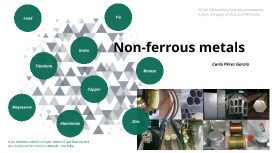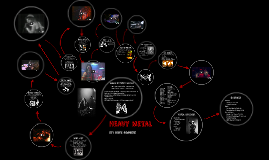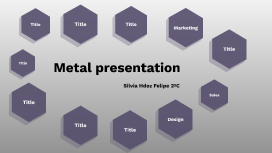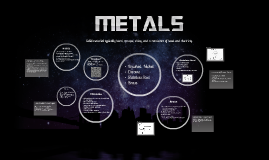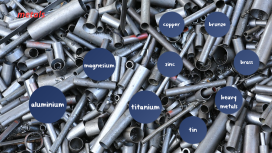Metal presentation
Transcript: All the information from this presentation is from the page of class and Wikipedia Non-ferrous metals Carla Pérez García A six minutes video(I cant put videos):Classification and Application of Non Ferrous Metals - YouTube Aluminium Aluminium Aluminiumis a chemical element with the symbol Al and atomic number 13. It has a density lower than those of other common metals, at approximately one third that of steel. It has a great affinity towards oxygen, and forms a protective layer of oxide on the surface when exposed to air. Source and characteristics Bauxite silvery white, highly resistant to corrosion, good at conducting electri- city and heat Uses High voltage power lines, planes,cars,bicycles,light metal work,roofing,deco ration,kithet tools and drink cans. Magnesium Magnesium As the lightest structural metal available, magnesium’s combination of low density and good mechanical strength results in a high strength-to-weight ratio. Subtopic 1 Source and characteristics Magnesite, dolomite shiny, silvery white(very light),soft and malleable, but no very ductile Subtopic 2 Uses Pyrotechnics(fireworks). The aerospace and cars industries and bibycles Titanium Titanium Titanium is a chemical element with the symbol Ti and atomic number 22. Found in nature only as an oxide, it can be reduced to produce a lustrous transition metal with a silver color, low density, and high strength, resistant to corrosion in sea water, aqua regia, and chlorine. Source and Characteristics Rutile and ilmenite. Sylvery white, shiny light,very hard and strong Uses Aerospace industry, building structures and medical prostheses (artifial limbs parts) Lead Lead is a chemical element with the symbol Pb (from the Latin plumbum) and atomic number 82. It is a heavy metal that is denser than most common materials. Lead Source and Characteristics Galena. Sylvery grey, soft and heavy, plasticity, can be toxic when lead fumes are inhaled. Uses Batteries, protective measures against nuclear radiation.An additive in glass to give hardness and add weight. Tin Tin Tin is a chemical element with the symbol Sn (from Latin: stannum) and atomic number 50. Tin is a silvery-coloured metal. Tin is soft enough to be cut with little force[7] and a bar of tin can be bent by hand with little effort. When bent, the so-called "tin cry" can be heard as a result of twinning in tin crystals;[8] this trait is shared by indium, cadmium, zinc, and mercury in the solid state. Source and characteristics (Classiterite) Shiny white,very soft, does not oxidise at room temperature Uses Tin foil and tin plate (a sheet of steel coated on both sides with a thin layer of tin). Alloyed with lead, is used for soft soldering. Zinc Zinc is a chemical element with the symbol Zn and atomic number 30. Zinc is a slightly brittle metal at room temperature and has a shiny-greyish appearance when oxidation is removed. It is the first element in group 12 (IIB) of the periodic table. Zinc Source and characteristics (Sphalerite and hemimorphine). Bluish grey,shiny, weak and at low temperatures,not very hard Uses Roofing, plumbing, and in the car industry Copper Copper Copper is a chemical element with the symbol Cu (from Latin: cuprum) and atomic number 29. Copper is one of the few metals that can occur in nature in a directly usable metallic form (native metals). This led to very early human use in several regions, from circa 8000 BC. Souce and characteristics (Culprite,chalcopyrite and malachite). Corrodes or oxidises very easily Uses Electrical wire, telephone lines, pipes and radiators Bronze Bronze is an alloy consisting primarily of copper, commonly with about 12–12.5% tin and often with the addition of other metals (including aluminium, manganese, nickel, or zinc) and sometimes non-metals, such as phosphorus, or metalloids such as arsenic or silicon. Bronze Souce and characteristics (Alloy of copper and tin). Resistant to wear and corrosion. Uses Boat propellers,filters,church bells, sculptures,nuts, bearings and cogs. Brass brass Brass is an alloy of copper (Cu) and zinc (Zn), in proportions which can be varied to achieve different colours and mechanical, electrical, and chemical properties,[1] but copper typically has the larger proportion. In use since prehistoric times, it is a substitutional alloy: atoms of the two constituents may replace each other within the same crystal structure. Sources and characteristics (Alloy of copper and zinc). Very resistant rocorrosion. Uses Handicraft, jewellery, plumbing, capacitors and tumbine.







